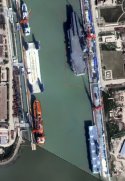You are using an out of date browser. It may not display this or other websites correctly.
You should upgrade or use an alternative browser.
You should upgrade or use an alternative browser.
CV-18 Fujian/003 CATOBAR carrier thread
- Thread starter Jeff Head
- Start date
Another satellite update.
Latest or what
by78
General
Prior to carrier Fujian's construction, a replica of its propulsion and power generating systems (1st image) were built and housed in a large onshore test facility, where a team of engineers (average age 33.4 years) carried out thorough verification of their design and performance under various simulated conditions (2nd image). The team summarized their work in two interesting academic papers (3rd and 4th image). A Google translation of both papers have been attached this post.
The first paper (original ):
Simulation of dynamic characteristics of marine steam power system under rapid power generation disturbance
Abstract: In order to ensure safe and stable operation of the marine steam power systems, it is necessary to study the dynamic response characteristics of the system under the rapid power generation disturbance of a turbo-generator set. An overall simulation model of a marine steam power system is established, and the simulation analysis of the dynamic characteristics of the system is carried out according to the operating conditions of single and continuous rapid disturbance of power generation. The simulation results show that the steam intake pressure of the main engine fluctuates by no more than 5% under single rapid disturbance, and by by no more than 7% under continuous rapid disturbance, and the fluctuation of the propeller's revolution speed under the two disturbance conditions is not more than 2%, which can meet the stable steam supply demand of the system. The results of this study can provide references for the safety design of marine steam power systems.
The second paper (original ):
Experimental study on dynamic characteristics of shipboard steam power system under rapid and large disturbance of generating power
Abstract: This study seeks to explore the dynamic response characteristics of a marine steam power system under the condition of rapid and large power disturbance. A complete set of onshore experimental devices for a steam power system is established, and the dynamic response characteristics are studied by applying power disturbance by simulated load. The experimental results show that under the condition of a single period disturbance, the fluctuation range of the boiler pressure is within ± 1.5% and that of the propeller speed is within ± 2.5%; under the condition of continuous periodic disturbance, the fluctuation range of the boiler pressure is within ± 2.5% and that of the propeller speed is within ± 3.5%; during the experiment, the steam power system generally runs in a stable manner. The results of this study can provide technical support for the actual operation and use of steam power systems.
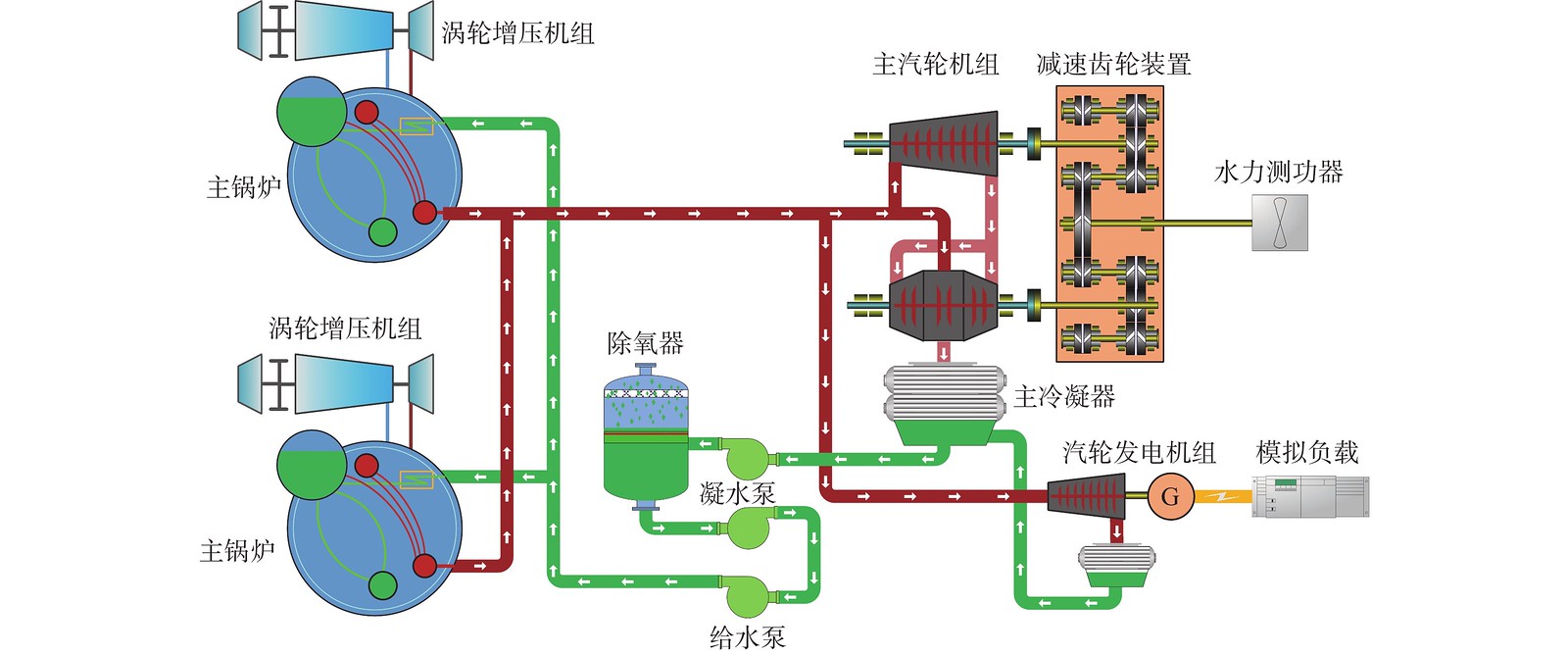

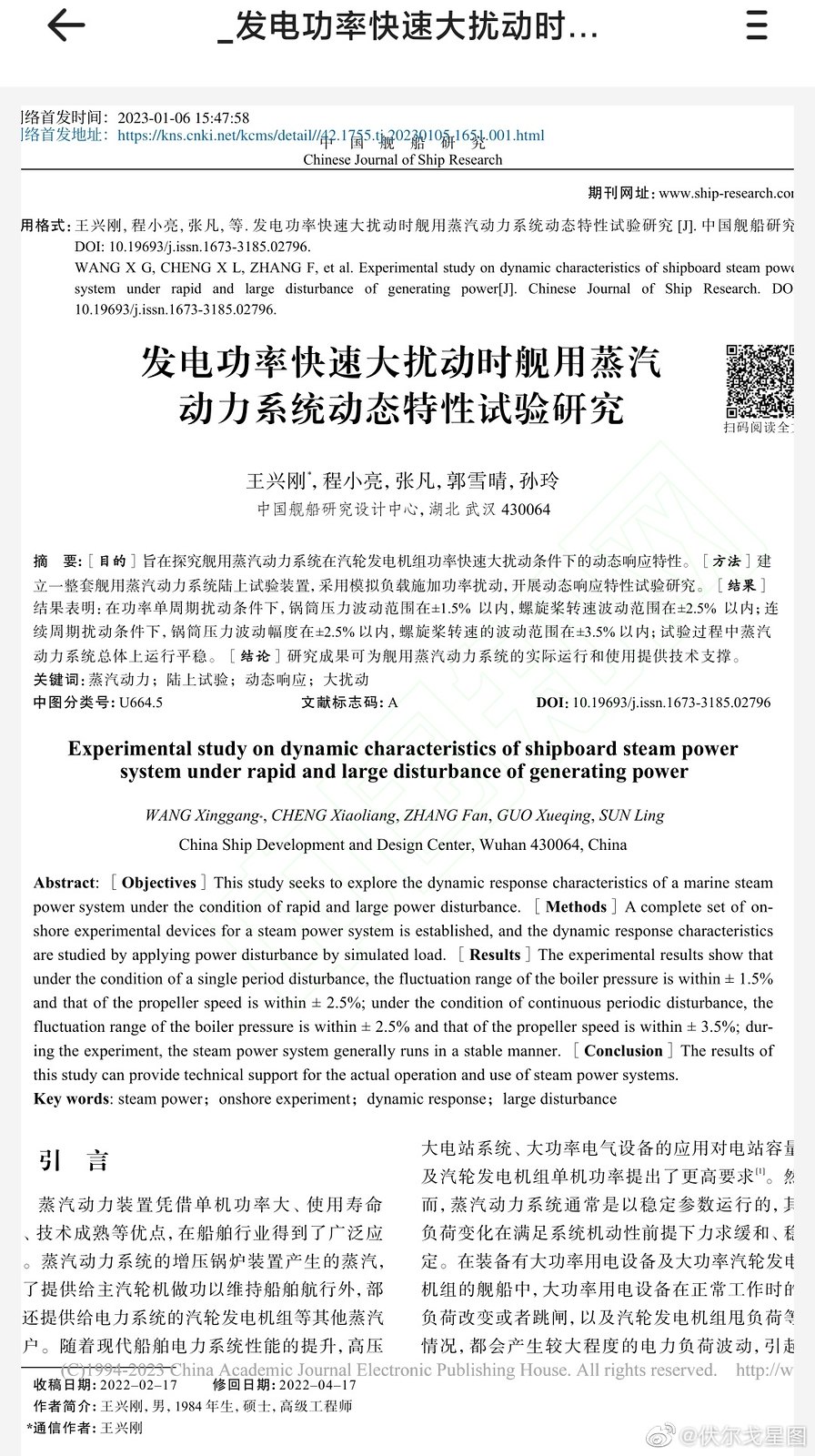
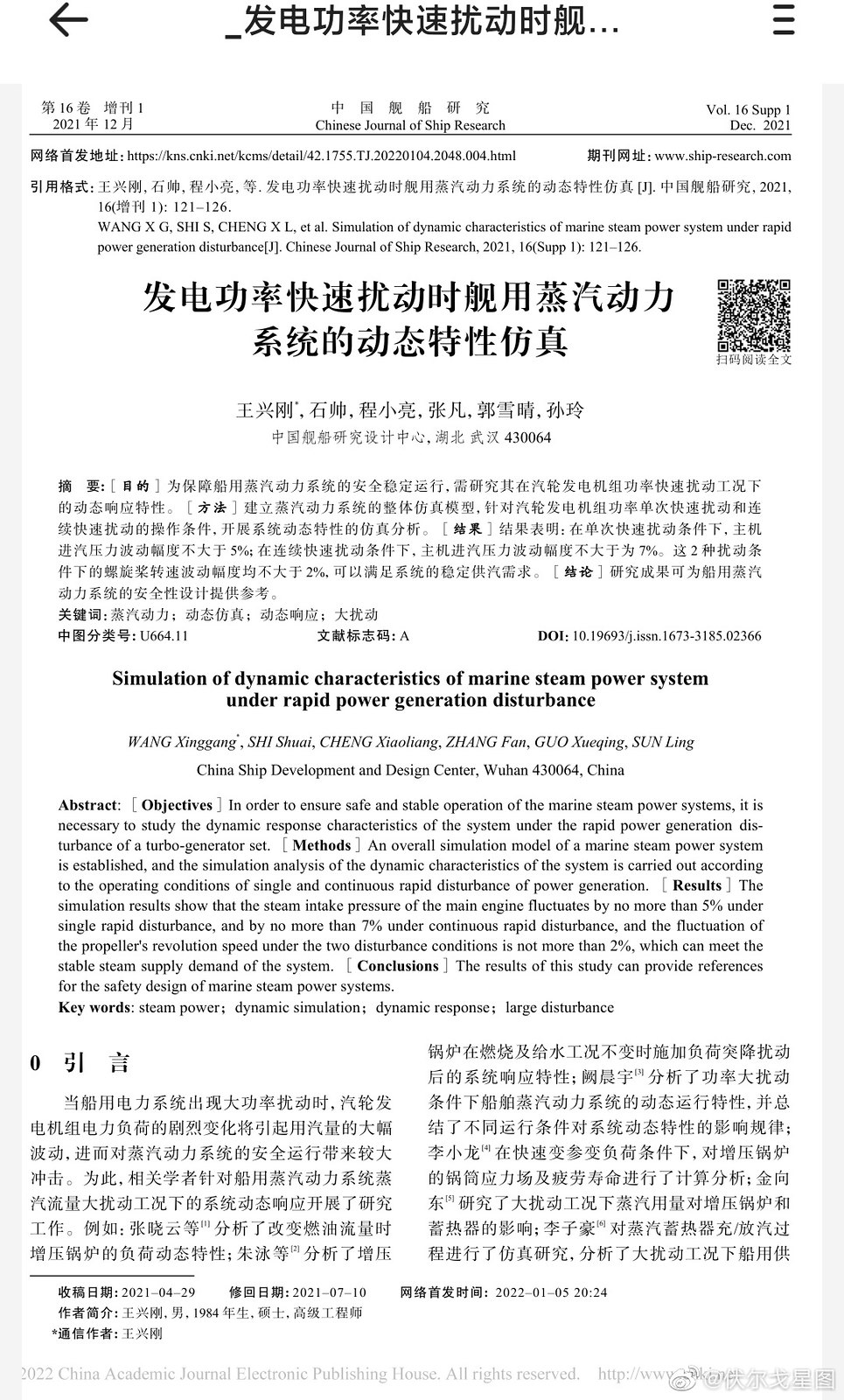
The first paper (original ):
Simulation of dynamic characteristics of marine steam power system under rapid power generation disturbance
Abstract: In order to ensure safe and stable operation of the marine steam power systems, it is necessary to study the dynamic response characteristics of the system under the rapid power generation disturbance of a turbo-generator set. An overall simulation model of a marine steam power system is established, and the simulation analysis of the dynamic characteristics of the system is carried out according to the operating conditions of single and continuous rapid disturbance of power generation. The simulation results show that the steam intake pressure of the main engine fluctuates by no more than 5% under single rapid disturbance, and by by no more than 7% under continuous rapid disturbance, and the fluctuation of the propeller's revolution speed under the two disturbance conditions is not more than 2%, which can meet the stable steam supply demand of the system. The results of this study can provide references for the safety design of marine steam power systems.
The second paper (original ):
Experimental study on dynamic characteristics of shipboard steam power system under rapid and large disturbance of generating power
Abstract: This study seeks to explore the dynamic response characteristics of a marine steam power system under the condition of rapid and large power disturbance. A complete set of onshore experimental devices for a steam power system is established, and the dynamic response characteristics are studied by applying power disturbance by simulated load. The experimental results show that under the condition of a single period disturbance, the fluctuation range of the boiler pressure is within ± 1.5% and that of the propeller speed is within ± 2.5%; under the condition of continuous periodic disturbance, the fluctuation range of the boiler pressure is within ± 2.5% and that of the propeller speed is within ± 3.5%; during the experiment, the steam power system generally runs in a stable manner. The results of this study can provide technical support for the actual operation and use of steam power systems.




Attachments
Last edited:
by78
General
An interesting on a large sliding hangar door design. The doors are light weight due to their composite construction, and they can withstand shock waves from a nuclear explosion. A Google translation of the paper is attached at the end of this post.
Long-span composite hangar door design and equivalent test of nuclear explosion impact
Abstract: Aiming at the urgent demand for lightweight hangar doors for warships, structural optimization design is carried out in the context of resisting the load of a nuclear explosion shockwave. At the same time, an equivalent test of the principle prototype is carried out to verify its resistance to a nuclear explosion shockwave. Based on the stress characteristics of the door body under a nuclear explosion shockwave, and taking advantage of the light weight and high strength of fiber-reinforced composites, a grid sandwich composite is used as the main lightweight bearing structure, and a fiber pile and dovetail groove are used as the steel-concrete connection structure, thus completing the scheme of the long-span composite door body. On this basis, the shockwave load is equivalent to the static load. According to the principle prototype of large-scale composite materials with a span of 6 meters, the experimental scheme and experimental tooling are designed, and the equivalent full load bearing experiment is completed. The results show that the composite lightweight scheme can reduce the weight by more than 30% compared with the steel structure scheme. At the same time, the simulation analysis and equivalent experimental results show that the long-span composite door body has the ability to resist the impact load of a nuclear explosion while meeting the requirements of the corresponding standards. The long-span composite door body proposed herein has the characteristics of an obvious weight reduction effect and strong bearing capacity, making it a feasible lightweight scheme for hangar doors (for warships). The equivalent bearing experimental method and experimental results of the principle prototype long-span composite door body have certain reference value for the subsequent application of large-scale composite materials on ships.
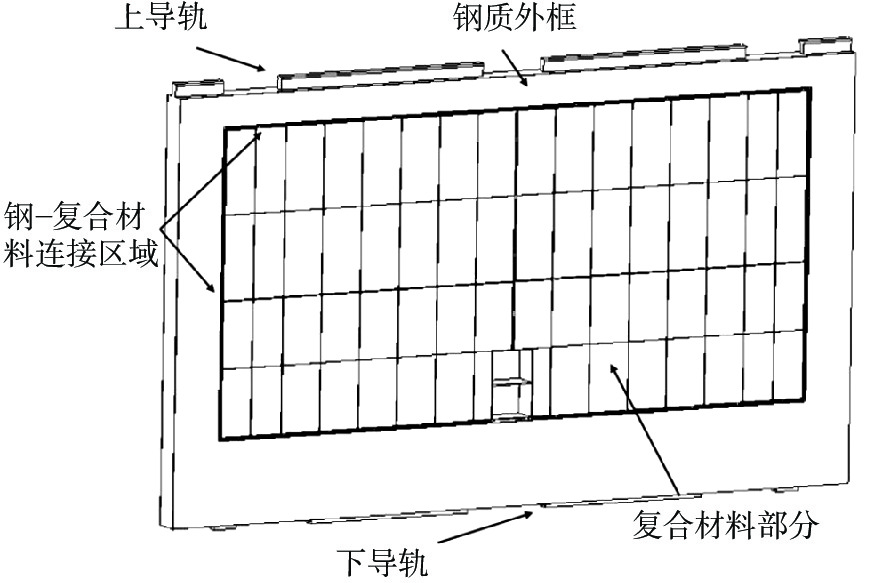
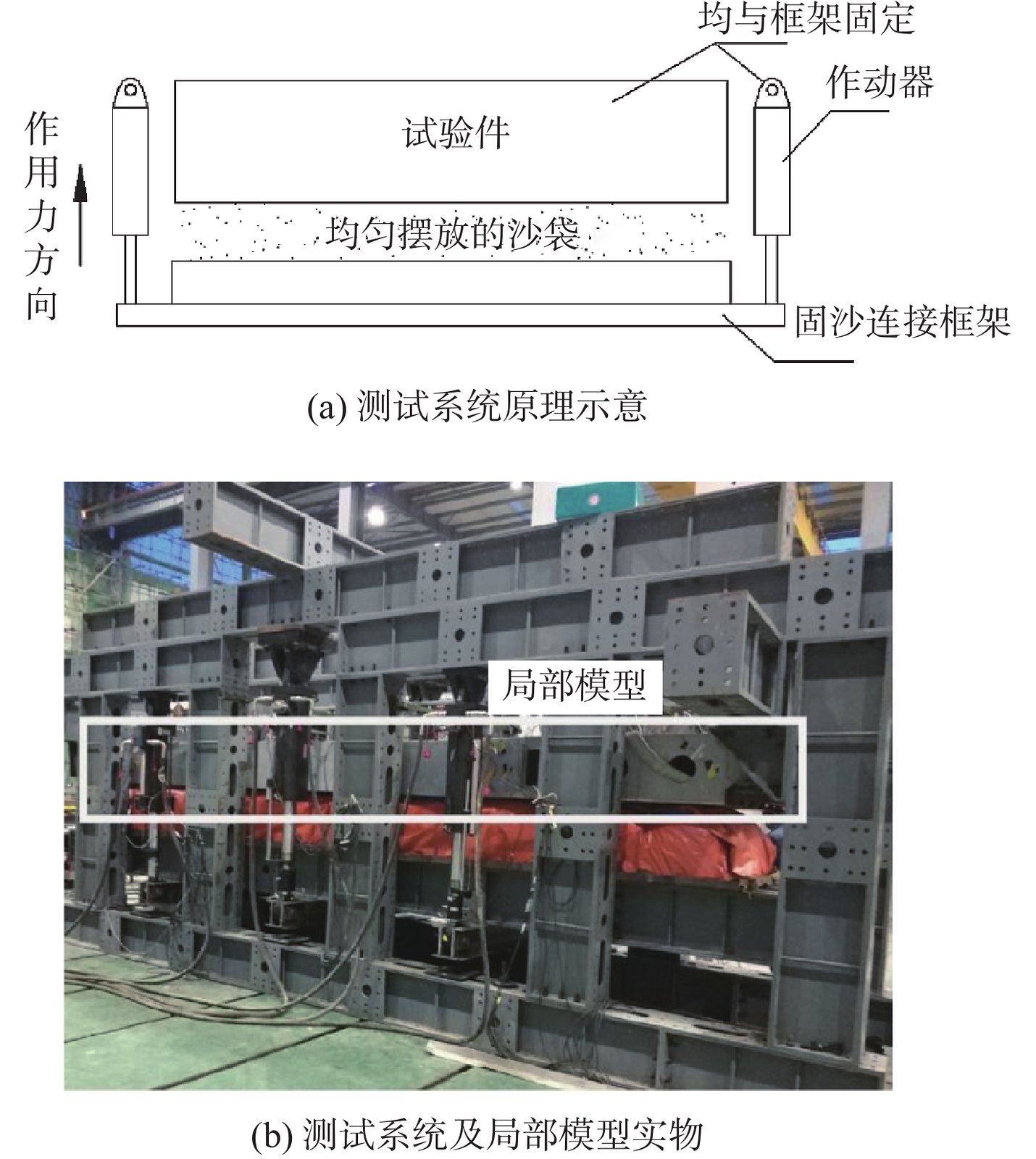


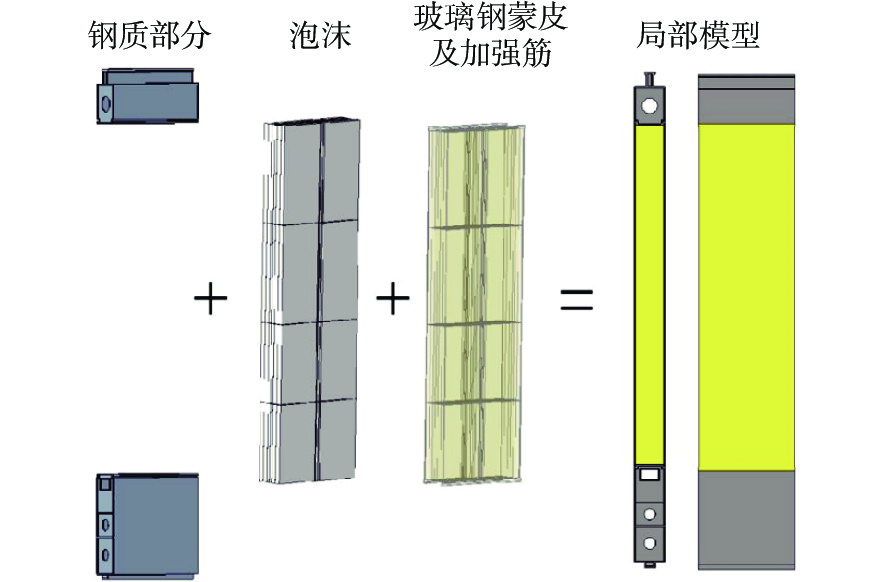
Long-span composite hangar door design and equivalent test of nuclear explosion impact
Abstract: Aiming at the urgent demand for lightweight hangar doors for warships, structural optimization design is carried out in the context of resisting the load of a nuclear explosion shockwave. At the same time, an equivalent test of the principle prototype is carried out to verify its resistance to a nuclear explosion shockwave. Based on the stress characteristics of the door body under a nuclear explosion shockwave, and taking advantage of the light weight and high strength of fiber-reinforced composites, a grid sandwich composite is used as the main lightweight bearing structure, and a fiber pile and dovetail groove are used as the steel-concrete connection structure, thus completing the scheme of the long-span composite door body. On this basis, the shockwave load is equivalent to the static load. According to the principle prototype of large-scale composite materials with a span of 6 meters, the experimental scheme and experimental tooling are designed, and the equivalent full load bearing experiment is completed. The results show that the composite lightweight scheme can reduce the weight by more than 30% compared with the steel structure scheme. At the same time, the simulation analysis and equivalent experimental results show that the long-span composite door body has the ability to resist the impact load of a nuclear explosion while meeting the requirements of the corresponding standards. The long-span composite door body proposed herein has the characteristics of an obvious weight reduction effect and strong bearing capacity, making it a feasible lightweight scheme for hangar doors (for warships). The equivalent bearing experimental method and experimental results of the principle prototype long-span composite door body have certain reference value for the subsequent application of large-scale composite materials on ships.





Attachments
I remember reading on this forum claims that the ship will also have a sizeable number of diesel generators. Some even speculated like a 50-50 distribution between steam and diesel. I don't see that mentioned here. Are the diesel generators on a separate network?Prior to carrier Fujian's construction, a replica of its propulsion and power generating systems (1st image) were built and housed in a large onshore test facility, where a team of engineers (average age 33.4 years) carried out thorough verification of their design and performance under various simulated conditions (2nd image). The team summarized their work in two interesting academic papers (3rd and 4th image). A Google translation of both papers have been attached this post.
The first paper (original ):
Simulation of dynamic characteristics of marine steam power system under rapid power generation disturbance
Abstract: In order to ensure safe and stable operation of the marine steam power systems, it is necessary to study the dynamic response characteristics of the system under the rapid power generation disturbance of a turbo-generator set. An overall simulation model of a marine steam power system is established, and the simulation analysis of the dynamic characteristics of the system is carried out according to the operating conditions of single and continuous rapid disturbance of power generation. The simulation results show that the steam intake pressure of the main engine fluctuates by no more than 5% under single rapid disturbance, and by by no more than 7% under continuous rapid disturbance, and the fluctuation of the propeller's revolution speed under the two disturbance conditions is not more than 2%, which can meet the stable steam supply demand of the system. The results of this study can provide references for the safety design of marine steam power systems.
The second paper (original ):
Experimental study on dynamic characteristics of shipboard steam power system under rapid and large disturbance of generating power
Abstract: This study seeks to explore the dynamic response characteristics of a marine steam power system under the condition of rapid and large power disturbance. A complete set of onshore experimental devices for a steam power system is established, and the dynamic response characteristics are studied by applying power disturbance by simulated load. The experimental results show that under the condition of a single period disturbance, the fluctuation range of the boiler pressure is within ± 1.5% and that of the propeller speed is within ± 2.5%; under the condition of continuous periodic disturbance, the fluctuation range of the boiler pressure is within ± 2.5% and that of the propeller speed is within ± 3.5%; during the experiment, the steam power system generally runs in a stable manner. The results of this study can provide technical support for the actual operation and use of steam power systems.




by78
General
Prior to carrier Fujian's construction, a replica of its propulsion and power generating systems (1st image) were built and housed in a large onshore test facility, where a team of engineers (average age 33.4 years) carried out thorough verification of their design and performance under various simulated conditions (2nd image). The team summarized their work in two interesting academic papers (3rd and 4th image). A Google translation of both papers have been attached this post.


Allegedly an interior image of the onshore test facility where the replica of Fujian's propulsion and power generation systems are housed.

No, both should be connected to the same main MVDC power bus therefor being called "综合电力系统" (Integrated Electric Power System) which btw was the root of the confusion by some with IEPS (Integrated Electric Propulsion System).I remember reading on this forum claims that the ship will also have a sizeable number of diesel generators. Some even speculated like a 50-50 distribution between steam and diesel. I don't see that mentioned here. Are the diesel generators on a separate network?
CG-illustrated - What if Russia also managed to "forcefully drive away" (强行开走) Ulyanovsk from Mykolaiv in early 1991, introduce her into service with the Russian Navy, and sent Ulyanovsk to China for maintenance (doge) on the same pier alongside Fujian and Guangxi right now (because the Russians have been overwhelmed with refitting Kuznetsov)?
The models are laid on a screenshot of the Jiangnan Shipyard viewed on Google Maps. By @大包CG on Weibo.
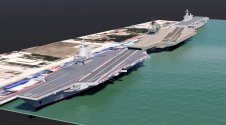
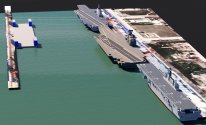
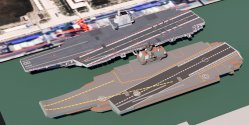
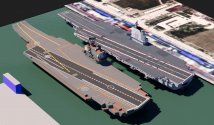
The models are laid on a screenshot of the Jiangnan Shipyard viewed on Google Maps. By @大包CG on Weibo.




Last edited:

